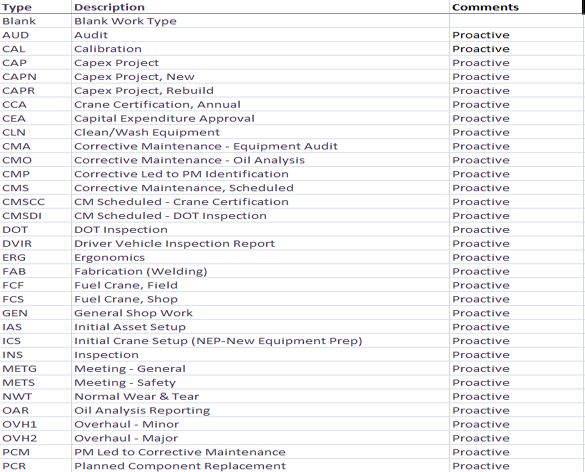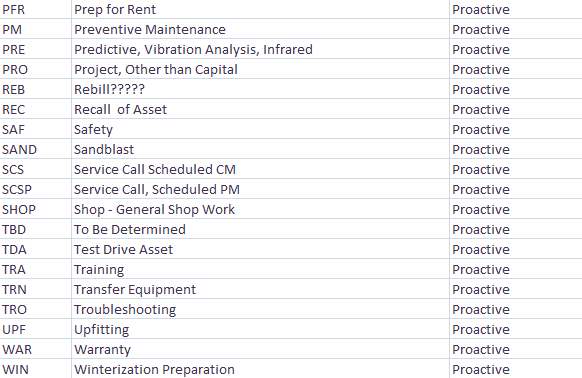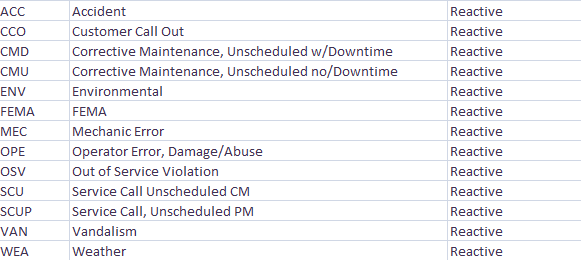Q&A Blog Categories
Supply Chain
Change Management
Business Intelligence
Project Cost Management
Managed Services
Enterprise Asset Management
ERP Implementation Projects
Construction Finance
ERP Project Managers
Construction ERP Pain Points
Women in Construction and Why it Matters – to Everyone
On-Premise, and Other Construction ERP Insights
Real Cost of Procession Union Payroll Manually
AI in construction
ERP User Adoption
Construction ERP Visibility
Changes in Construction Technology
Jim Nelson | SIS Senior Industry Consultant, Enterprise Asset Management (EAM)
![]() Interview by: Sarah D. Morgan, SIS Marketing Manager
Interview by: Sarah D. Morgan, SIS Marketing Manager

This week I sit down with Jim Nelson, SIS Senior Consultant, Industry (EAM), to talk about Proactive vs. Reactive Maintenance KPI’s for ERP with Enterprise Asset Management. Proper EAM for the construction industry is key to operational and competitive success. Jim leads SIS’s EAM group and has delivered over 100 EAM implementations to date including an underground Mining & Gold Processing Plant in Ghana where they realised they were literally digging for gold. See that case study at the end of this article.
Q: Tell us a bit about your background with Enterprise Asset Management (EAM)?
A: I have 30+ years delivering EAM Implementations, in a wide variety of industries, over 100+ implementations to date, with 10 years in EAM Sales & Marketing. EAM is in my DNA – my father climbed the ranks, starting in the storeroom, then mechanic, preventive maintenance manager and at the time of his retirement, was the EVP of Equipment & Operations, for S.J. Groves Highway Construction, formerly known as the largest interstate highway construction company in the history of the USA. His career included the management of the largest Caterpillar fleet in the USA. I learnt a great growing up at his side. I have also learnt a great deal working in over 100 EAM environments, including fleet & plant asset management implementation projects, training thousands of end users, shop management, storeroom renovation projects & inventory & purchasing management.
Q: To get us started, what is EAM?
A: EAM’s origins come from Computerised Maintenance Management Systems (CMMS). Enterprise Asset Management software allows an organisation to track all “maintenance related activities on their maintenance worthy assets.” EAM Software is most commonly used for asset history, component tracking, work order planning & scheduling, preventive maintenance scheduling, materials management, maintenance repair and operations (MRO) Inventory & Purchasing Controls.
Q: What are common business requirements for EAM?
- Asset Lifecycle History – “Cradle to Grave”
Asset LTD Cost Tracking by Location/Job Site
Work Request Entry by Operations
Work Order Planning & Scheduling
Preventive Maintenance Scheduling
Component Tracking
Capital Project Tracking
MRO Inventory Control
KPI’s Development & Dashboards
Robust Reporting Capabilities
ERP Integrations
Mobile Technology
Q: What are the common benefits of EAM?
- Ability to Track any “Maintenance Worthy” Asset – Build Meaningful History
- Increase Asset Reliability and Life Cycles
- Reduce Total Asset Ownership Costs
- Improve Optimal Asset Replacement Timing Decisions
- Improve Work Order Planning and Scheduling
- Improve Preventive Maintenance Scheduling
- Improve Outside Contractor (Vendor) Scheduling
- Improve Component Service Life
- Increase Warranty Claims Tracking
- Improve Communications Between Operations and Maintenance
- Improve Employee Productivity and Overall Satisfaction
- Reduce Double Entry of Information
- Increase Availability of Meaningful EAM Information
Q: What is the typical cost justification for EAM?
A: What most companies discover is the benefit of Increased Labour Productivity, with better organisation, and ability to track performance. You see an example in the table below. And as a fact, positive control can increase labour productivity.

- Reduced Overtime Costs
- Reduced Outside Contractor Expense
- Cost Effective Preventive Maintenance Activities vs. Expensive Corrective Maintenance Activities
- Reduction of Maintenance Work Order Backlog
- Less Need to Re-Hire Staff Due to Attrition
You also see ROI benefits around Extended Normal Asset Life through improved warranty tracking and improved maintenance scheduling. As a fact, preventative maintenance activities can increase asset life 10% to 20%. Another fact is preventive maintenance activities cost significantly less that corrective maintenance activities.

A large justification is the Reduced Asset Downtime which is a factor of improved maintenance. An ROI fact is that planned maintenance activities will result in fewer emergency shutdowns as demonstrated in the table below:

And then, Reduced MRO Inventory and Purchasing Costs which are reflected directly in the bottom line. EAM improvements can net 25% cost savings and provide forecasts for better long-term spending. Facts are that MRO inventory can be reduced one time by 5% to 10%. Another fact is that positive control of purchasing activities can reduce annual purchasing costs 2% to 3%. The table below breaks these out.

Q: You mention Proactive vs. Reactive maintenance as the number one issue in EAM. Why is this the case?
A: Generally speaking, reactive (corrective) maintenance costs far exceed proactive maintenance costs. A major indicator in EAM is the percentage of reactive vs proactive. Reactive maintenance can easily be 75%-80% reactive. Proactive maintenance of 75% can be achieved.
Q: As a top issue for construction firms, what are the main problems of proactive versus reactive scenarios?
A: The biggest problem is the lack of EAM system expertise, in other words, how to properly implement the system’s features to “swing the pendulum from reactive to proactive”. Lack of Management Support. The tables below show a proper setup to first identify proactive work order types versus reactive work order types.



Q: How is ERP helping solve those problems?
A: The ideal solution is an ERP system that has a fully Integrated EAM system, as opposed to an EAM standalone system requiring integrations. A fully integrated system removes silos and gives you a view of the entire operation.
Q: How is SIS solving these problems?
A: SIS provides a total solution combining ERP & EAM, fully integrated with Microsoft Dynamics 365 and SIS Construct 365. In addition, SIS provides EAM consulting services for the construction industry.
Q: Do you have a before and after case study to share?
A: Yes, the client is AngloGold Ashanti (AGA) in Obuasi Ghana. It is an underground Mining & Gold Processing Plant. This case goes back to 2014. They were running Infor/SSA BPCS iSeries, Their EAM System was Infor/SSA iSeries EAM formerly known as-SSA/Elke EAM.
Their EAM Objective was to Implement the MRO (spare parts) Inventory & Purchasing Controls system. We converted 10K+ part records from their ERP system to EAM to facilitate parts inventory and purchasing control objectives.
The storeroom project was to renovate an existing storage warehouse full of old project related materials, to create a Centralised MRO Storeroom. The Storeroom was designed to meet the needs of both underground mining assets, as well as any surface related assets. The major assets included Atlas & Sandvik drills, loaders and haul trucks. Prior to the construction of the new MRO Storeroom, spare parts were kept in a variety of underground locations and these parts were not identified in the ERP system. These underground locations were referred to as “ghost stores”. It was a common order practise to order 3-4 if you needed 1, with the extras kept underground. The parts boxes shown in the picture below, numbered in the hundreds and were located in several different surface area shops. Over Project’s 18 months, we inventoried every box and brought the “ghost stores” to the surface to place them in the MRO Storeroom. The project highlight was the cleanup and organisation efforts resulted in identifying over $6M is usable parts. We were literally “mining gold!” You can see the before and after photos below.
